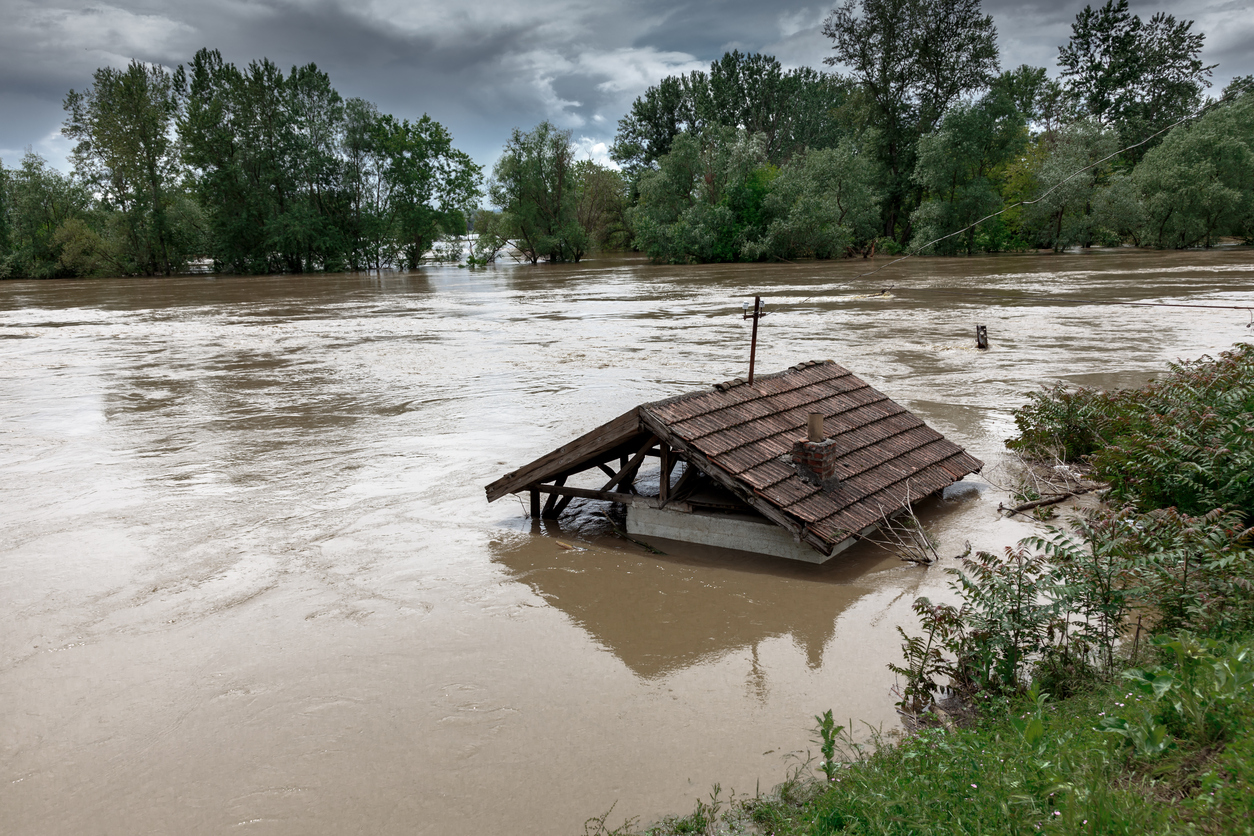First Street Foundation today released their peer-reviewed precipitation model that captures climate-driven changes in heavy rainfall events for the United States and describes the implications for flood risk across the Nation in their report, The 8th National Risk Assessment: The Precipitation Problem. The US government’s current gold standard for precipitation expectations was created by the National Oceanic and Atmospheric Administration (NOAA), known as “Atlas 14”. The report compares it to the First Street Foundation Precipitation Model (hereafter FSF-PM) to understand the previously unaccounted influence of climate change. It finds that, in the worst cases, what is currently estimated to be an infrequent and severe 1-in-100-year flood event, is a much more frequent 1-in-8-year event.
While NOAA has recently received nearly $32 million in funding from Congress to update their precipitation standards, the expected release date of that updated product, to be known as Atlas 15, is not expected until 2027. The new FSF-PM addresses the well-known issues in Atlas 14 and immediately allows for insights and informed actions today that otherwise would have to wait until NOAA’s completion of Atlas 15.
The results of First Street’s study show that over half the population – some 51% of Americans – live in areas that are now twice as likely to experience a severe “1-in-100 year flood” event as expected from Atlas 14. Roughly 21% of the country can now expect their “1-in-100-year flood” to happen every 25 years. And in the most extreme cases, over 20 counties in the US – home to over 1.3 million people – are expected to experience the current “1-in-100 year flood” severe event at least once every 8-10 years. The greatest corrections in these expectations and increases in severe rainfall events exist in some of the most populated areas of the country – throughout the Northeast, along the Ohio River Valley, and the Texas and Louisiana Gulf Coast – which are the areas that have historically invested the most on engineered solutions for flood protection. The design standards for those projects are based on outdated Atlas 14 data and are likely to fail.
“This work highlights the degree to which the changing climate has affected our understanding of the likelihood of extreme precipitation events”, said Dr. Jeremy Porter, Head of Climate Implications Research at the First Street Foundation. “Over the last few years, we have seen a remarkable uptick in flooding from heavy rainfall, which, unfortunately, is becoming our new normal for most of the US population”.
Dr. Jungho Kim, First Street’s senior hydrologist and lead author of the peer-reviewed study added, “The magnitude of the changes in expected rainfall intensity are startling for many areas in the United States, and it is important that Americans are fully aware of this consequence of climate change that can impact their lives and homes.”
The report also highlights the impact of continued warming into the future. Looking at highly populated cities such as Houston, Texas, the initial Atlas 14 correction is pronounced, increasing the likelihood of Houston’s 1-in-100-year flood event by 335% to a 1-in-23-year event. As the climate continues to warm, that same event will become a 1-in-11-year event by 2053, an 809% increase in likelihood.
One particular concern discussed in the report is that $1.2 trillion has been recently appropriated through the Infrastructure Investment and Jobs Act (IIJA) to fund capital investment and infrastructure spending through 2027. The vast majority of those projects will require significant engineering expertise, including the development of design standards to withstand climate-related risk exposure today and into the future. NOAA’s Atlas 14 is the current authoritative source for local area extreme precipitation risk and is mandated by many states in infrastructure design. When taken together with the delay in the production of the new Atlas 15 precipitation estimates, this means that billions of dollars from the IIJA funding will be spent on projects that will not be built to the proper flood design standard.
“The recent allocation of the IIJA funding is a once-in-a-generation opportunity to make communities safer and to modernize America’s infrastructure so that it is more resilient to our rapidly changing climate,” said Matthew Eby, Founder and Executive Director of First Street Foundation. “The fact that the Nation will not have the most accurate estimates of extreme precipitation likelihoods available at the time of the design of these projects means that many of them will be out of date on the day they are opened to the public”.
The FSF-PM estimates will be integrated into the forthcoming version 3.0 of the First Street Foundation Flood Model and integrated onto the Risk Factor platform on July 31st and available for bulk access by contacting support@firststreet.org.













